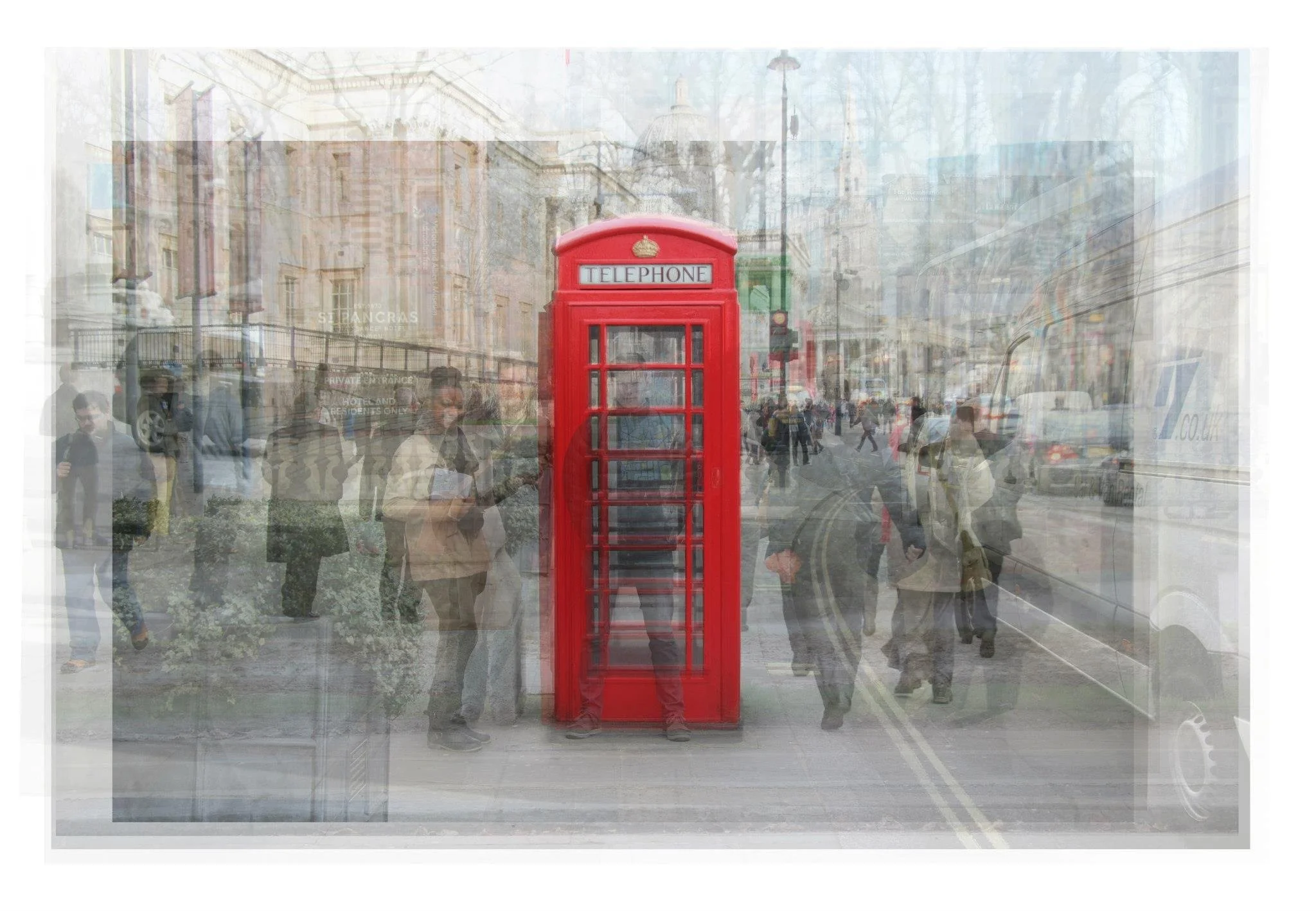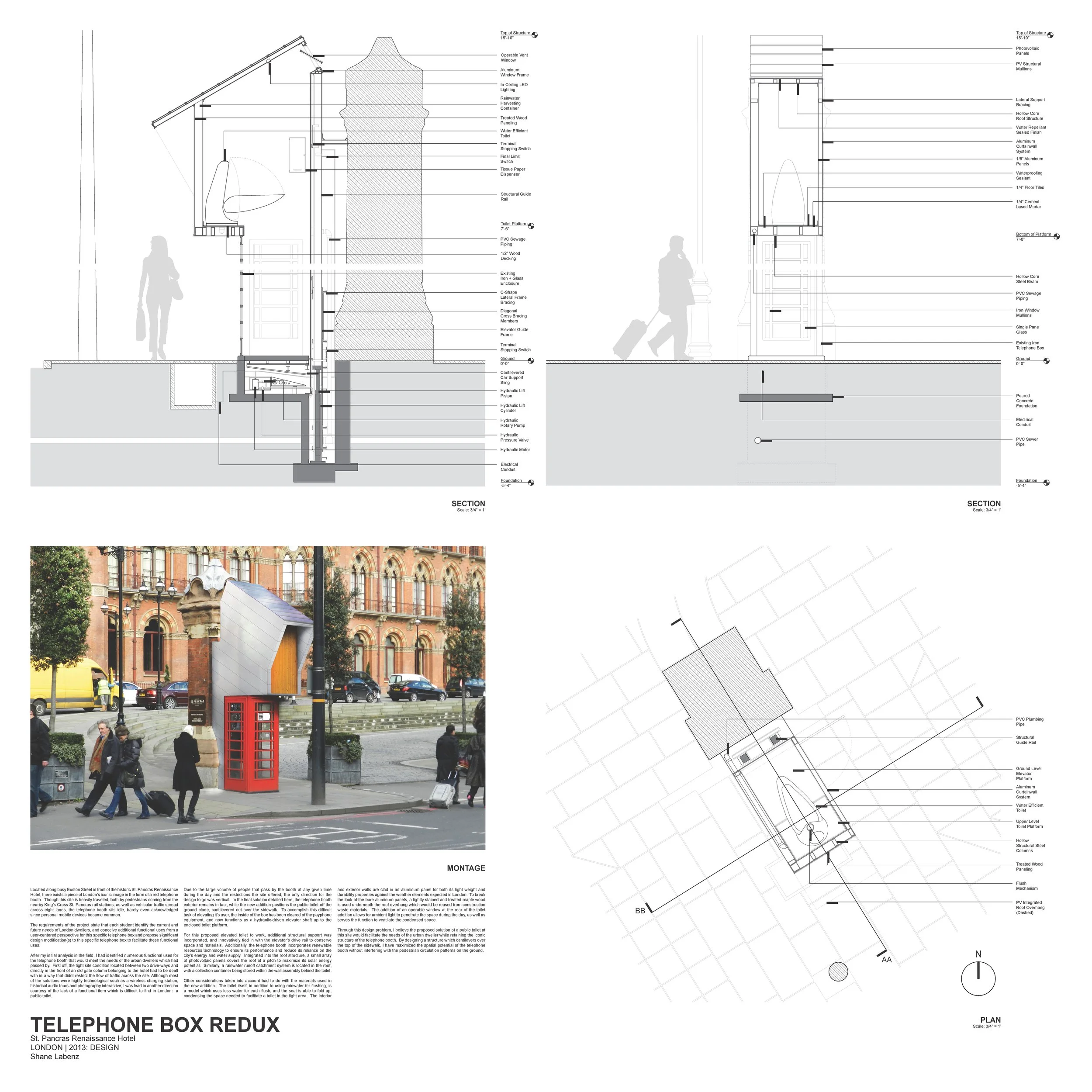
Telephone Box
Redux
The first red telephone box was installed in 1926. The prototypical Kiosk No. 2 (K2) was designed by Sir Giles Gilbert Scott as a pre-fabricated urban amenity in which a coin-wielding urban dweller could make a telephone call from a public street, and with some level of both acoustical privacy and protection from meteorological phenomena. At the time of their deployment, Telephone Boxes were the technological state of the art in the Communications sector, and they were infra-structures designed in response to a demonstrated need of urban dwellers.
Today, the ubiquity of the personal cellphone, in conjunction with modern society’s accelerating transition into a cashless population, has rendered the Telephone Box technologically obsolete. Their underutilization has led to them often found to be vandalized, littered, or desecrated.
Despite their technological obsolescence, Telephone Boxes continue to signify London as a place for infrastructural progress, and they stand today as underutilized reminders for connecting London to previous versions of itself.
What are the current and future needs of the London urban dweller, and how ought the adaptive reuse of existing Telephone Boxes best address them?
For this Telephone Box Redux project, each student:
1.) field-measured and documented an existing telephone box, including its associative site condition, located near a cultural amenity in London UK.
2.) identified the current and future needs of London’s urban dwellers, and considered the upcycling of a site-specific Telephone Box through additional functional uses from a user-centered perspective.
3.) propose a design upgrade to this specific telephone box to enable new functional uses.
Redux design proposals utilize existing Telephone Boxes as found in their current placement and condition. Although Redux solutions may engage the ground plane, no design modification adversely affects either pedestrian or vehicular traffic in a permanent way. Furthermore, overhead clearance for pedestrians shall be provided at 6’-8” minimum.
Sites were selected by students and include the British Museum, Hyde Park, the National Gallery, the Royal Academy of Arts, St. Pancras station, and the Victoria & Albert (V&A) museum.
Victoria & Albert Museum (V&A)
Chris Rokahr, M.Arch, University of Nebraska
Virgin Track
Shane Labenz, M.Arch, University of Nebraska
Thomson Reuters Data Centre
Chris Lander, M.Arch, University of Nebraska


